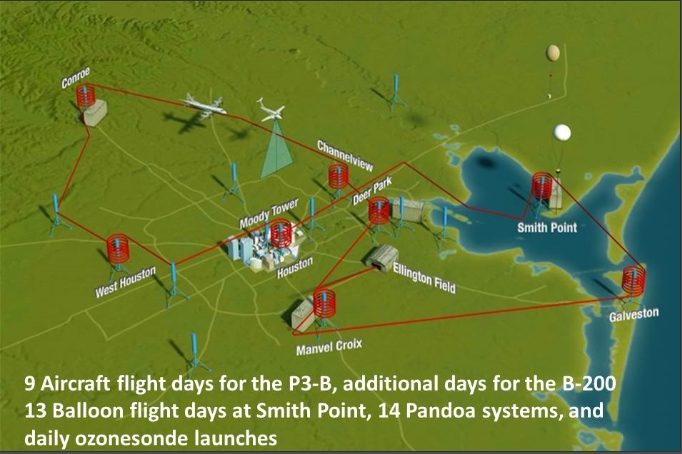Science Campaigns
DISCOVER-AQ 2011 - 2014
The Pandora system has been used on several scientific campaigns. The largest of these campaigns was a series of four NASA campaigns, DISCOVER-AQ, involving ground-based instruments, aircraft, and balloon sondes. The two-month campaigns fielded 12 to 14 Pandoras each, some of which were devoted to measuring altitude profiles of NO2 and O3. The remote sensing profiles were successfully compared to in-situ profile data from spiraling aircraft and balloon sondes. The campains were near Baltimore, Maryland (2012), Central Valley, California (2013), near Houston Texas (2013), and near Denver, Colorado (2014). The DISCOVER-AQ data are available from NASA Langley Research Center. The Pandora system has been used for validation of satellite ozone and NO2 data, most notably at Goddard Space Flight Center and at NOAA in Boulder, Colorado.
KORUS-AQ 2016
A campaign involving 8 Pandoras, other ground-based instruments, and aircraft took place during April to June 2016. Pandora spectrometer instruments were located in Busan University, Gwangju-GIST, Anmyeon-do, Olympic Park, Seoul-Yonsei University, Taehwa Mountain,Yeoju, and Songchon. The data record for some sites started in April 2015.
Two of the Pandora instruments are also long-term sites (Busan and Seoul-Yonsei University) with data starting in 2012.
Campaign Sites
Thessaloniki, Greece
Cabauw, Holland (CINDI-1 and CINDI-2)
Table Mountain, California
Fairbanks, Alaska
Baltimore Area, Maryland DISCOVER-AQ (12 sites)
Central Valley, California DISCOVER-AQ (12 sites)
Houston Area, Texas DISCOVER-AQ (14 sites)
Denver Area, Colorado DISCOVER-AQ (14 sites)
South Korea, pre-KORUS-AQ (6 sites)
South Korea KORUS-AQ (8 sites)

DISCOVER-AQ Campaign near Houston, Texas (Sep. 2013)

